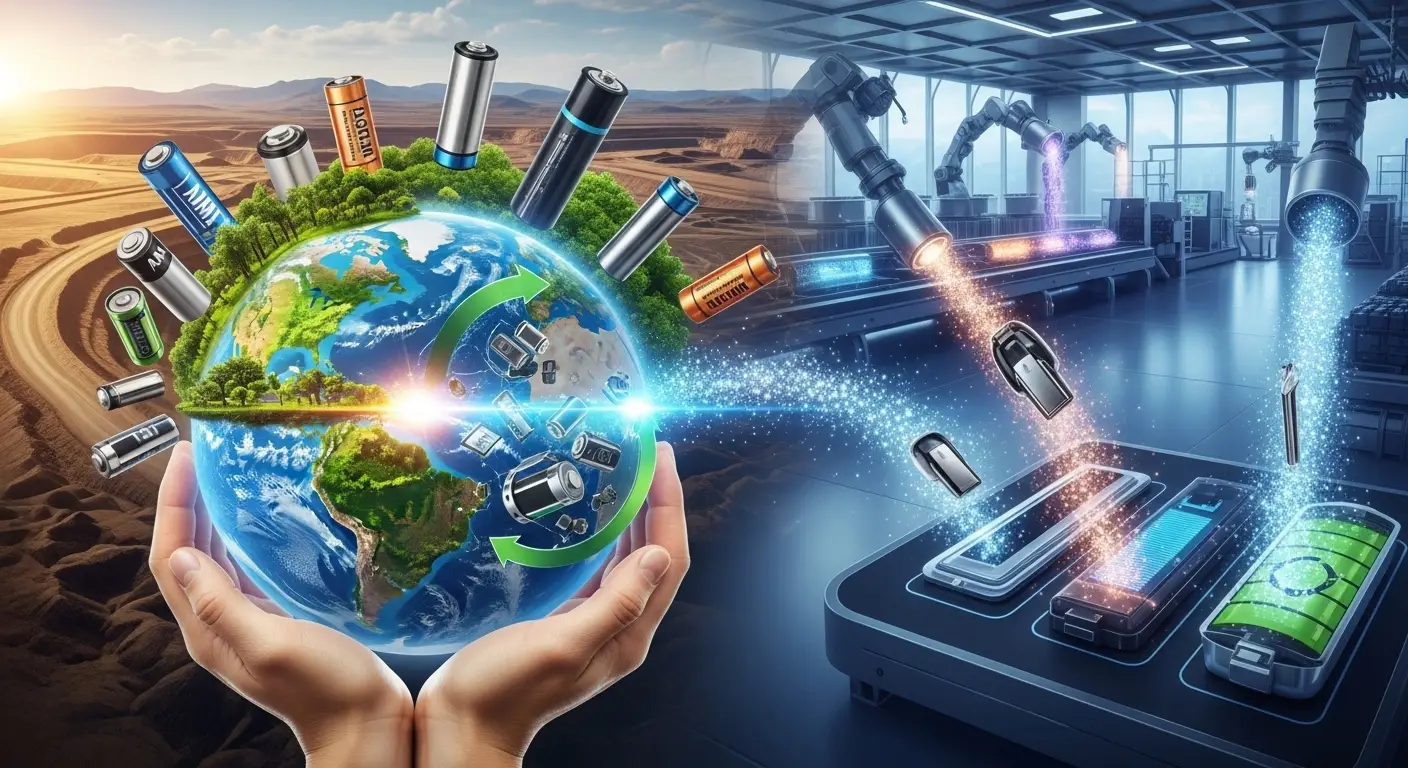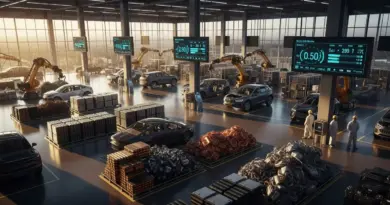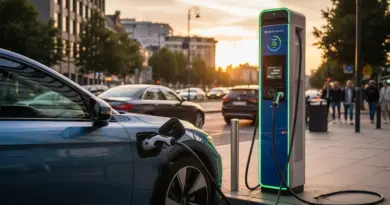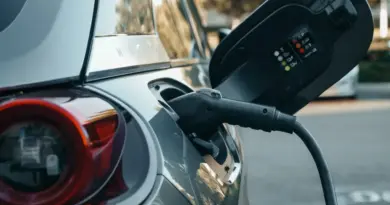Battery Recycling: A Solution to the Scarcity of Critical Minerals
Last Updated on September 27, 2025 by Team Eletric Car
Battery recycling offers a sustainable way to combat the scarcity of critical minerals like lithium, cobalt, and nickel, recovering up to 95% of these materials from used EV batteries to reduce mining dependency and support the clean energy transition by 2050.
In 2025, with global demand for critical minerals surging 30% annually due to electric vehicles and renewables, recycling could supply 20-30% of needs, cutting environmental impacts from extraction and easing supply chain risks through innovative technologies like direct lithium extraction.
What Are Critical Minerals and Why Are They Scarce?
Critical minerals are essential raw materials for modern technologies, including batteries, solar panels, and wind turbines. For beginners, think of them as the “building blocks” of clean energy devices—without them, we couldn’t power electric cars or store renewable energy efficiently. Key examples include lithium for battery cathodes, cobalt and nickel for stability, plus copper, graphite, and rare earths. The U.S. Department of Energy lists 50 such minerals, while the EU focuses on 34, with the IEA highlighting lithium, nickel, cobalt, manganese, and graphite as battery staples.
The scarcity of critical minerals stems from exploding demand outpacing supply. In 2024, lithium demand jumped nearly 30%, driven by EVs and storage, while nickel and cobalt grew 6-8%. Under net-zero scenarios, mineral needs could quadruple by 2040, with EVs alone accounting for half. Mining faces hurdles: long development times (up to 16 years), geopolitical risks (e.g., 70% of cobalt from the Democratic Republic of Congo), and environmental damage like water pollution and habitat loss. Prices spiked in 2021-2022 but fell back, signaling volatility. Battery recycling emerges as a vital bridge, turning waste into resources.
The Growing Demand for Critical Minerals in the Energy Transition
The shift to clean energy amplifies critical minerals needs. EVs require six times more minerals than fossil-fuel cars, and a single offshore wind turbine uses 8 tons of rare earths. By 2035, battery metals supply growth has doubled pre-2020 rates, but concentration risks persist—China controls 82% of refined materials. In Europe, secondary supply from recycling could meet 30% of lithium and nickel demand by 2050, higher than the global 20% average.
For leigos, imagine: without enough critical minerals, the green revolution stalls—fewer EVs mean more emissions. Battery recycling addresses this by creating a circular economy, where old devices feed new ones, reducing import bills and investment in risky mining.
How Battery Recycling Works: Processes and Technologies
Battery recycling recovers valuable materials from lithium-ion batteries (LIBs), the dominant type in EVs and gadgets. It starts with collection: used batteries from consumers, manufacturers, or end-of-life vehicles go to certified facilities. Processes vary by method, but all aim to separate black mass (cathode/anode mix) for metal extraction.
Key Recycling Methods
- Pyrometallurgy: High-heat smelting (like steelmaking) recovers cobalt, nickel, and copper as alloys, but loses lithium and generates emissions. It’s energy-intensive but scalable.
- Hydrometallurgy: Chemical leaching with acids extracts 95%+ of metals, including lithium, at lower temperatures. It’s cleaner but costlier.
- Direct Recycling: Emerging tech separates cathode materials without dissolving, preserving structure for reuse—up to 90% recovery with minimal waste.
- Bioleaching and Green Solvents: Uses microbes or ionic liquids (DESs/ILs) for eco-friendly extraction, reducing acid use by 70%.
In 2025, global LIB recycling capacity hits 1.6 million tons/year, with innovations like AI-optimized sorting boosting efficiency. For example, direct lithium extraction from brines or clays could cut processing time by 50%.
Here’s a simple comparison of methods:
| Method | Recovery Rate | Environmental Impact | Cost |
|---|---|---|---|
| Pyrometallurgy | 50-85% (metals except Li) | High emissions | Low |
| Hydrometallurgy | 90-98% | Medium (chemicals) | Medium-High |
| Direct Recycling | 90-95% | Low | Emerging (High now) |
These processes turn scarcity into opportunity, with end-of-life batteries providing 90% of feedstock by 2050.
Benefits of Battery Recycling for Critical Mineral Supply
Battery recycling tackles scarcity head-on by creating secondary supply. By 2040, recycled copper, lithium, nickel, and cobalt from spent batteries could meet 10% of demand, rising to 20% globally by 2050. It reduces mining needs: 90% lithium recovery could supply 60% of U.S. demand in 2050, enough for 54 million EVs from 2025-2030.
Environmentally, it slashes emissions—recycling one ton of batteries saves 2.5 tons of CO2 vs. mining. Economically, it cuts costs: secondary lithium is 40% cheaper. For regions like Europe with limited reserves, it enhances energy security, reducing import reliance by 30%. Socially, it curbs exploitative mining, like child labor in cobalt sites.
In simple terms, battery recycling is like recycling cans but for high-tech metals—turning trash into treasure while protecting the planet.
Challenges in Scaling Battery Recycling
Despite promise, battery recycling faces hurdles. Low collection rates (only 5% of U.S. LIBs recycled) stem from poor infrastructure and consumer habits. Technical issues: mixed battery chemistries complicate sorting, and lithium recovery is often uneconomical due to low prices. Economic barriers: mining remains cheaper short-term, with recycling costs 20-50% higher without subsidies.
Regulatory gaps: unclear export rules for used batteries hinder trade. In 2025, volatile prices and supply chain concentration (China dominates 66% of new capacity) add risks. Environmental concerns: improper recycling can release toxins if not managed.
Addressing these requires investment—e.g., DOE’s $500 million for processing and $192 million for R&D in 2025.
Current Initiatives and Policies Promoting Battery Recycling
Governments and companies are stepping up. The IEA’s Critical Minerals Policy Tracker notes 30+ new measures since 2022, including EU’s battery regulation mandating 70% cobalt/nickel recovery by 2030. U.S. DOE’s Battery and Critical Mineral Recycling Program funds innovative reuse, with $1 billion in NOFOs for mining-to-recycling chains.
Corporate leaders: Redwood Materials plans a factory for 1 million EVs’ worth of recycled materials by 2025, scaling to 5 million by 2030. Cyclic Materials uses hydrometallurgy for rare earths. Apple’s robotics dismantle devices for 98% material recovery, while BMW and Tesla partner on closed-loop supply.
Internationally, IRENA pushes for better infrastructure, and South Africa’s frameworks prioritize secondary minerals to cut landfill waste.
Future Outlook: Battery Recycling in 2030 and Beyond
By 2030, battery recycling could alleviate 20% of critical minerals shortages, with end-of-life feedstock dominating. Innovations like machine learning for sorting and ressonance-based extraction promise 99% recovery. Under ambitious scenarios, secondary supply meets 30% of lithium needs, quadrupling circular economy value to $50 billion.
However, full solution requires policy: extended producer responsibility (EPR), incentives, and global standards. By 2050, recycling integrates with substitution (e.g., cobalt-free batteries) and efficient use, ensuring sustainable transition.
For everyday users, this means more affordable EVs and less mining footprint— a win for economy and ecology.
Pros and Cons of Battery Recycling as a Solution
Pros:
- Reduces scarcity by supplying 10-30% of minerals, easing supply risks.
- Lowers emissions: 40-60% less CO2 than mining.
- Cost savings: recycled materials 20-40% cheaper long-term.
- Enhances security: domestic supply cuts import dependency.
- Supports jobs: recycling industry could create 10 million roles by 2030.
Cons:
- High upfront costs: facilities need $100M+ investment.
- Low current rates: only 5-10% batteries recycled globally.
- Technical limits: not all minerals (e.g., lithium) always recovered.
- Infrastructure gaps: collection networks underdeveloped in many regions.
- Market volatility: low prices make recycling uneconomic short-term.
Balancing these, battery recycling is essential but needs support to scale.
FAQs
What are the main critical minerals recovered through battery recycling?
Lithium, cobalt, nickel, copper, and graphite are key, with recovery rates up to 95% using hydrometallurgy, addressing EV battery needs.
How much of global critical mineral demand can recycling meet by 2050?
Under IEA scenarios, battery recycling could supply 20% globally, rising to 30% in regions like Europe, reducing mining by millions of tons.
What are the environmental benefits of battery recycling?
It cuts CO2 emissions by 2.5 tons per ton recycled, minimizes mining pollution, and conserves water—up to 50% less than virgin extraction.
Why is battery recycling not yet solving the scarcity problem fully?
Current capacity is low (1.6M tons/year in 2025), collection rates are 5-10%, and economics favor mining; policies and tech are scaling it up.
Which countries lead in battery recycling policies?
EU mandates 70% recovery by 2030; U.S. invests $1B via DOE; China holds 66% of capacity growth since 2020.
Can consumers participate in battery recycling?
Yes, drop off used batteries at certified centers (e.g., via Best Buy or auto shops) or use manufacturer take-back programs like Tesla’s.




